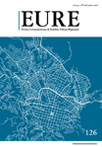Culture, urban transformation and citizen empowerment against gentrification. Comparing the case of Getsemaní (Cartagena de Indias) and El Raval (Barcelona)
DOI:
https://doi.org/10.4067/S0250-71612016000200005Keywords:
urban culture, gentrification, citizen participationAbstract
Culture has become an essential element in the processes of urban transformation, especially in the central districts of historical cities. This is explained by the crucial role that culture plays in promoting consumption and territorial marking in the context of globalization of economic and tourist flows. The role of culture in the revamping of urban space has been repeatedly criticized by several authors. However, it is also suggested that culture can contribute to revalue deprived districts by creating positive images and empower citizens against gentrification. Also, as it will be analyzed in the case of Getsemaní and Raval, the alliance of creative industries with traditional inhabitants allows generating discourses and plans alternative to expulsion and standardization of historically popular urban spaces, creating a shared neighborhood identity based on the existing intangible heritage.
Downloads
Published
How to Cite
Issue
Section
License
Copyright (c) 2016 Revista EURE - Revista de Estudios Urbano Regionales

This work is licensed under a Creative Commons Attribution 4.0 International License.
Al momento de aceptar la publicación de sus artículos, los autores deberán formalizar la cesión de derechos de autor a EURE, según las condiciones establecidas por la Revista.
Ésta establece que el autor autoriza a EURE de manera gratuita, exclusiva e ilimitada a reproducir, editar, publicar, distribuir, publicitar, comercializar y traducir el artículo, a cualquier soporte conocido o por conocer y desarrollar.
Del mismo modo, los autores aseguran que el artículo propuesto es original, no publicado y no propuesto para tal fin a otro medio de difusión.


